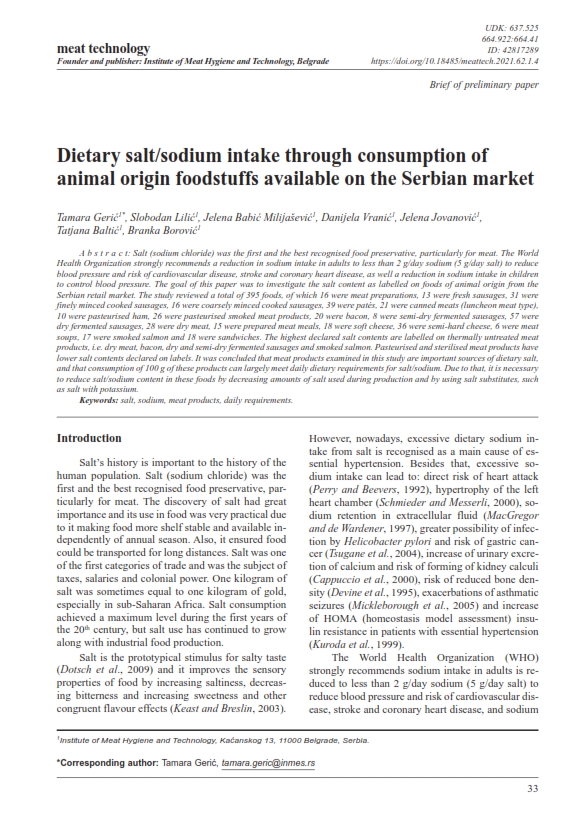Dietary salt/sodium intake through consumption of animal origin foodstuffs available on the Serbian market
Abstract
Salt (sodium chloride) was the first and the best recognised food preservative, particularly for meat. The World Health Organization strongly recommends a reduction in sodium intake in adults to less than 2 g/day sodium (5 g/day salt) to reduce blood pressure and risk of cardiovascular disease, stroke and coronary heart disease, as well a reduction in sodium intake in children to control blood pressure. The goal of this paper was to investigate the salt content as labelled on foods of animal origin from the Serbian retail market. The study reviewed a total of 395 foods, of which 16 were meat preparations, 13 were fresh sausages, 31 were finely minced cooked sausages, 16 were coarsely minced cooked sausages, 39 were patés, 21 were canned meats (luncheon meat type), 10 were pasteurised ham, 26 were pasteurised smoked meat products, 20 were bacon, 8 were semi-dry fermented sausages, 57 were dry fermented sausages, 28 were dry meat, 15 were prepared meat meals, 18 were soft cheese, 36 were semi-hard cheese, 6 were meat soups, 17 were smoked salmon and 18 were sandwiches. The highest declared salt contents are labelled on thermally untreated meat products, i.e. dry meat, bacon, dry and semi-dry fermented sausages and smoked salmon. Pasteurised and sterilised meat products have lower salt contents declared on labels. It was concluded that meat products examined in this study are important sources of dietary salt, and that consumption of 100 g of these products can largely meet daily dietary requirements for salt/sodium. Due to that, it is necessary to reduce salt/sodium content in these foods by decreasing amounts of salt used during production and by using salt substitutes, such as salt with potassium.
Keywords: salt, sodium, meat products, daily requirements.





